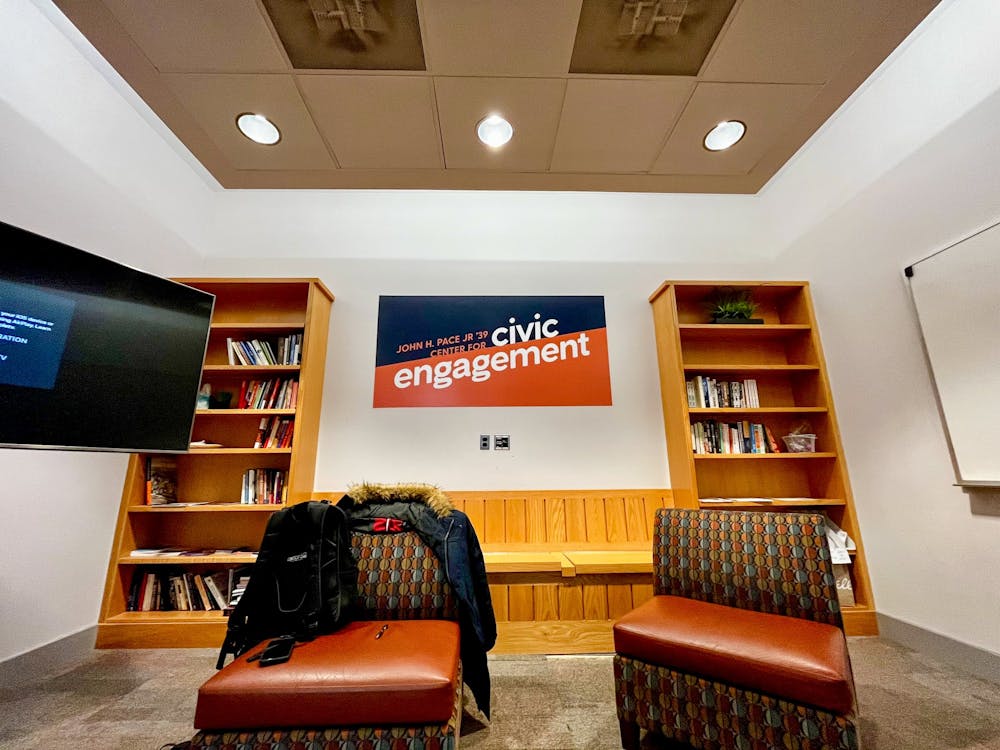It is not hard, however, to find remnants of the neighborhood that gave rise to the 1969 Stonewall Rebellion. While there are few locales quite as seedy as the original Stonewall Inn, Christopher Street is still home to an unusually eclectic cast of New Yorkers. I recently found myself with some of them for a class assignment, at one of a number of unnamed sex shops.
It is in places such as these at which the radical origins of the gay rights movement meet the movement’s more innocuous, modern incarnation. A sign on one pornography rack reads “Foot Fetishes Available at Counter”; right next to it is a bumper sticker that says “Love families, support all marriage.” Sexual liberation on the one hand, marital commitment on the other. Fetishes versus families.
The gay community has been dealing with this kind of schizophrenia since the early days of gay identity. In his history of gay theater — much of it based in Greenwich Village — John Clum described this tension as the “anarchic” versus “domestic” impulse. The first was an attempt to mock hetero-normative values, and the second an attempt to portray gays as “normal.” The contrast is still relevant in the gay community today, as certain members of the gay community disavow dominant, heterosexual culture and its institutions, while others seek to be a part of that culture. The political arm of the gay movement has chosen the latter, in both its branding and goals.
In recent years, the focus of the gay rights movement has trended towards marriage equality — the ability for gay people to marry just like everyone else and the ability to be “normal.” The public face of the gay community striving for this normality no longer includes the drag queens and hustlers who protested at the Stonewall Inn. Instead, we see Neil Patrick Harris or Ellen DeGeneres, Barney Frank or Lieutenant Dan Choi — entertainers, politicians and activists who, aside from their public role, would otherwise “pass” as straight. We see cowboys in “Brokeback Mountain,” soldiers in Lt. Dan Choi and families in TV shows and movies such as “Modern Family” or “The Kids are All Right.” It is easy for mainstream — that is, straight — America to accept the gay community and its marriage equality goals when the gay image is based on figures like these.
But an inside look at the gay community tells a different story. Even as gay people are accepted into the mainstream, the normality that dominates gay identity today coexists with the latent sexual radicalism of 40 years ago. While this radicalism does not receive media attention, it is still a significant part of gay identity. Back in the Greenwich Village sex shop, committed couples walk in to buy porn that they will watch together. Uptown, at a sex shop in the more upscale neighborhood of Chelsea, a graphic designer in a committed but open relationship is waiting for a hookup. These men, among others, are representative of a gay identity that was founded on a rejection of heterosexual institutions, but is now adopting them.
And as gay people are accepted into the mainstream — liberals, radicals and everyone in between — they are changing the definition of “mainstream.” The gap between sexual liberation and commitment, radical and liberal, fetish and family, is shrinking, in both the gay community and mainstream culture as a whole.
The gay rights movement, in its varied stages, has shown that the sexual freedom of Greenwich Village, even the kind found at Stonewall four decades ago, can coexist with the sexual institutions created by dominant, heterosexual society — including our society’s most basic understandings of love, relationships and, ultimately, marriage. We are expanding these ideas and institutions and making them more honest and inclusive. In spite of the sterility of the gay community’s image, we are still absorbing the radicalism that began the gay rights movement and the more moderate radicalism of today’s gay community. Among the litany of gay rights victories over the last few years, this too is something to celebrate.
Brandon Davis is a sophomore from Westport, Conn. He can be reached at bsdavis@princeton.edu.







